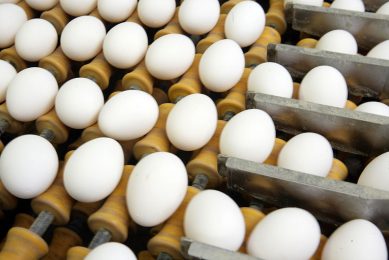Ethanol Production
In response to environmental restraints including banning the additive MTBE, and Congressional tax incentives, ethanol production from maize has expanded to the point that the energy industry is now in direct competition with intensive livestock. By Simon Shane
The escalation in the price of crude oil to above $70/barrel has stimulated alternative production of fuel sources in the USA. In response to environmental restraints including banning the additive MTBE, and Congressional tax incentives, ethanol production from maize has expanded to the point that the energy industry is now in direct competition with intensive livestock. Given the E0.11/l tax concession to refiners to add 10% ethanol to petrol, and the current net margin of over E150 from processing 1 m ton of maize, there is an increasing rate of diversion of this feedstuff from poultry and swine production.
Prof. Robert Wisner of Iowa State University estimates that with projected areas planted to maize and with realistic yields, diversion of maize will increase from 36 million m tons in the 2005/06 season, representing 14% of production, to 62 million m tons for the 2008/09 harvest, or 24% of output. This increase is predicated on the documented orders for 40 new ethanol plants to commence production by mid 2007, increasing supply from 20.0 billion liters in mid 2006 to a probable 40.0 billion liters in mid 2008.
Escalating demand without a proportional increase in supply of maize, due to limitations on available land, will result in a rise in ex-farm maize price from E87/ton in 2005/06 to E105/ton in 2008/09, given stable domestic feed and food consumption and export demand. In the event of a 12% depression in yield due to drought in 2008/09 for example, the Maize price could increase to E113/ton. To put the rise in price in perspective it is estimated that for every E5/ton rise in ex-farm cost of maize, US broiler integrators would bear an additional cost of nearly E65 million on an annual production of 16 million m tons of ready to cook product. Egg producers would experience an increase of E35 million annually on an output of 7.5 billion dozen.
Agribusiness giant ADM has effectively morphed into an energy company as the leading ethanol producer with a current output of 4.5 billion liters or 25% of the US supply. The appointment of Patricia Woertz, an oil-industry executive previously with Chevron to the position of CEO of ADM defines the future direction of the Company. The aggressive approach to diversion of maize by ADM and other producers is a cause for concern as expressed by Warren Staley of Cargill, since costs of livestock production worldwide will increase due to the unprecedented trend in biofuel production from maize. The introduction of new technology to produce cellulosic ethanol is too far in the future to represent any relief to the livestock industry.
The question of concern relates to the justification for the distortion of rational economics by government subsidies to produce ethanol. This will inevitably result in inflation in the cost of poultry meat and eggs to consumers with little resolution of the underlying problem of replacing oil imports into the US.
By: Simon Shane













